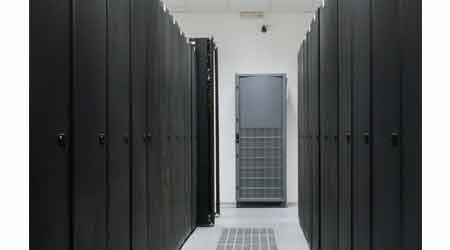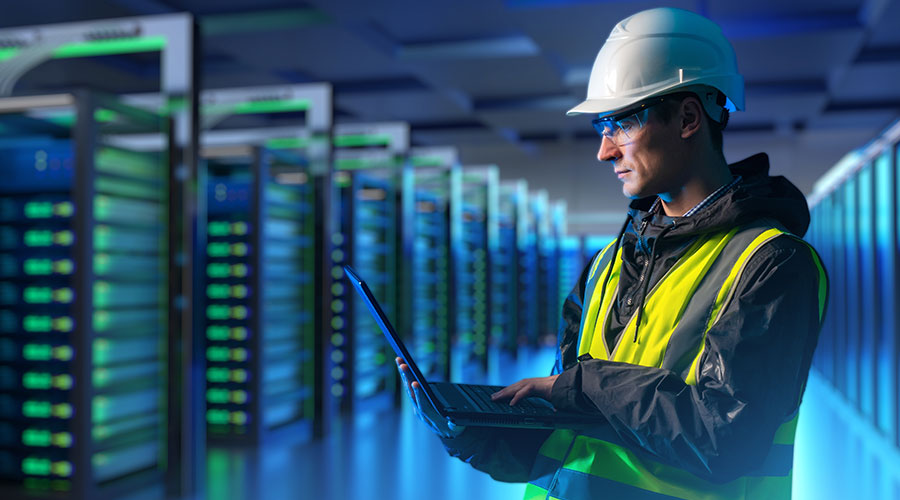Financial Incentives Can Help Cut Data Center Energy Costs
First of a 3-part article on incentive programs offered by utilities and state energy offices to manage and control data center energy use
With the expansion of the Internet, phone apps, and cloud-based business, the data centers that handle all of that digital traffic are now major users of electricity. To help manage and control their rapid load growth and power consumption, many utilities and some state energy offices offer financial incentives. Money may be available for both simple upgrades (e.g., lighting) and those involving the information technology (IT) equipment that consumes most of a data center’s power. Some utilities also offer special electric rates for such customers, and maybe even money for on-site generation. Savvy data center facility managers are finding ways to secure and maximize those benefits.
From 2000 to 2005, data center power use doubled. It’s expected to increase another 9 percent per year into 2020. On a per-square-foot basis, a data center may consume up to 50 times the kilowatt-hours (kWh) of an average office. That requires more intense HVAC, which uses more power. Data centers now consume between 1.7 and 2.2 percent of all kWh used in the United States. Based on data from the U.S. Department of Energy (DOE), that’s more than is used for cooking in all of America’s homes.
To quantify the relative kWh consumed by a data center’s computers versus all other uses (e.g., HVAC), data centers use a metric called power usage effectiveness (PUE). A PUE of 2 means that twice as many kWh were used overall as were used by the IT-related equipment. A lower PUE means that relatively fewer kWh were consumed by non-IT functions (e.g., power conditioning equipment, lighting, and HVAC), so lower is better. Many data centers have PUEs below 1.7; a PUE of 1.5 translates to two thirds of all of a data center’s power being consumed by its IT equipment. That’s comparable to industrial facilities (e.g., metal production) with high process-related loads.
Regardless of size, a data center offers new challenges for energy cost control. A data center is composed of many servers that contain the circuit boards, microprocessors, memory, and central processing units (CPUs) to handle millions of tasks per minute. Groups of these servers are inserted into frames or special shelving units called racks. “Blade servers” — special chassis that house thin, modular electronic circuit boards and that have their own CPU and memory — are increasingly used in data centers. Servers produce heat and must be maintained within tight temperature and humidity ranges.
A data center creates a relatively constant load, rather than one impacted by weather or building occupancy. Unlike offices that require continuous fresh air flow to accommodate people, data centers may recirculate 95 percent of their air. Controlling energy use and cost may therefore involve additional and different options than found in typical utility rebate programs.
Incentives for Data Centers
Ted Brown, program manager for IT conservation at Seattle City Light (a municipal utility), indicates that — despite large data centers having been around for almost a decade — utility incentives focused on them are still relatively new and few. A good overview of the types of incentives and programs offered by 142 U.S. and Canadian utilities (out of the more than 3,000 that exist) may be downloaded from the Consortium for Energy Efficiency (CEE) at http://library.cee1.org/content/2015-cee-data-centers-and-business-it-program-summary. The programs and incentives vary widely and are continuously changing, so check with your local utility before taking any action.
Because options for cutting energy use may relate to how data is handled within a data center (e.g., shared or concentrated on servers), IT sophistication with such issues is essential. In a recent survey, the Uptime Institute, which supports the data center industry, found that many servers sat unused (it calls them “comatose” or “zombie”) while still drawing power and emitting heat. Utility incentives for cutting such wasted energy may be proportional to such savings. Some of the most common options that Uptime lists involve site-specific analysis and engineering:
• Adiabatic or evaporative cooling (strongly influenced by local weather conditions). • Liquid cooling (by piping refrigerant near and among servers). • Air flow containment across aisles of servers (e.g., involving underfloor circulation). • Adjusting server inlet temperatures following ASHRAE TC 9.9 guidelines (without shortening their lifetime due to overheating).
While the servers use the lion’s share of kWh, Brown says his utility’s program was able to assist in significantly cutting data center HVAC energy use (in some cases by more than 25 percent) through its support for higher-efficiency CRAC (computer room air conditioning) units and installation of variable speed drives in air handlers. Such improvements, Brown says, account for most of the incentives his utility provides to data centers. He points out the difficulty in getting IT personnel to agree to changes in IT equipment, since it is the revenue source for such facilities.
Related Topics:














